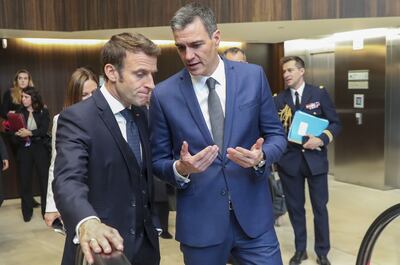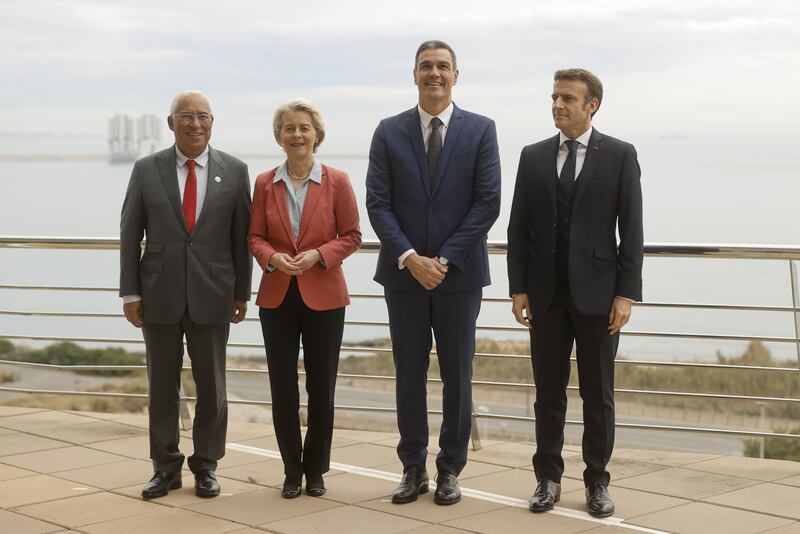The leaders of France, Spain and Portugal on Friday officially approved an ambitious underwater pipeline to bring green hydrogen from the Iberian Peninsula to the rest of Europe
The H2Med project, set to be completed by 2030 at a cost of about €2.5 billion ($2.6 billion), will help Europe make the transition from fossil fuels to cleaner energy.
It comes as Europe scrambles to reduce its dependence on Russian oil and gas following the invasion of Ukraine.
The pipeline between Barcelona and Marseille will carry two million tonnes of hydrogen per year, or 10 per cent of European consumption, once it goes online, said Spanish Prime Minister Pedro Sanchez.
“It is going to be the first major hydrogen corridor in the European Union,” Mr Sanchez said.
The project will cost around €2.5 billion, he said at a joint press conference with French President Emmanuel Macron and Portuguese Prime Minister Antonio Costa.
The three leaders formally signed off on the plans in the presence of EU Commission chief Ursula Von der Leyen on the sidelines of a regional EU summit.
Following the talks, they released a road map and timeline for completing H2Med which they hope will be partially covered by European funds.
The pipeline under the Mediterranean Sea will carry green hydrogen, which is made from water via electrolysis in a process using renewable energy.
The road map detailed three options for the route of the pipeline, with the preferred one stretching 455km at a maximum depth of 2,600 metres.
Construction will begin in 2025 and last four years and eight months, it said.

H2Med aims to boost the decarbonisation of European industry, giving it large-scale access to clean energy from Spain and Portugal, which are hoping to become world leaders in green hydrogen thanks to their numerous wind and solar power farms.
“The focus of H2 demand is on sectors that are difficult to decarbonise, such as industry and transport,” the road map said.
“The cost of H2 transmission by pipeline over long distances is 2 to 4 times lower than transmitting electricity over high-voltage lines.”
Announced at an EU summit in October, the pipeline offers an alternative to the defunct 2003 MidCat pipeline project which was to have carried gas across the Pyrenees from Spain to France.
It was abandoned in 2019 over profitability issues and objections from Paris and environmentalists.
Initially, the idea was for the pipeline to carry gas from the Iberian Peninsula to central Europe, given Spain and Portugal's huge capacity for turning liquefied natural gas that arrives in tankers back into gas form.
But Mr Costa stressed that the pipeline would carry only green hydrogen.
The meeting took place just before a EuroMed 9 summit bringing together Croatia, Cyprus, France, Greece, Italy, Malta, Portugal, Slovenia and Spain
Spain's Mr Sanchez had planned to hold bilateral talks with Italy's new far-right Prime Minister Giorgia Meloni, but she pulled out due to illness early on Friday, Rome said.







